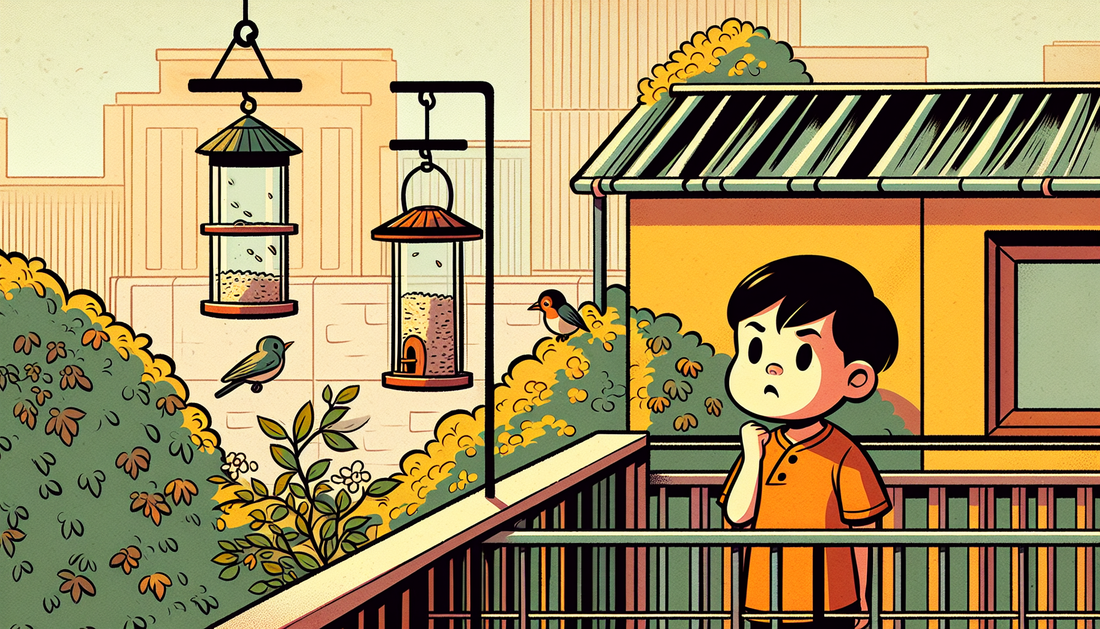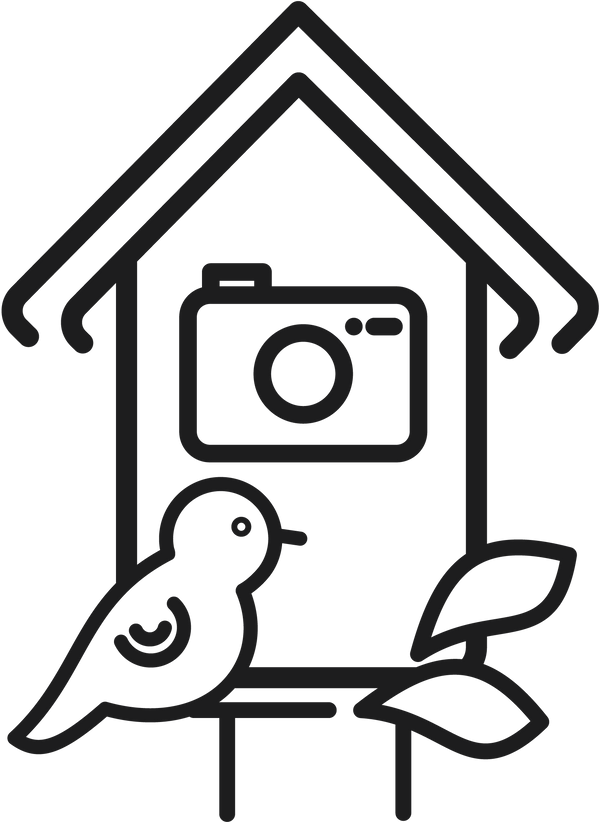
Encourage garden birds: Biodiversity tips for balconies and gardens
Urban areas are becoming increasingly dense - new green spaces are rarely created between rows of houses, parking bays or markets. But it is precisely in this development that there are city dwellers worth protecting: our native garden birds. Whether titmice, sparrows or robins - they maintain the natural balance, eat pests, help spread seeds and enrich the city with song and color. But how can we bring more biodiversity back to balconies and gardens? In this guide, you will learn how to support garden birds in a targeted way - with species-appropriate feeding, nesting sites and modern technology. You will receive practical tips on implementation, legal principles and recommendations for the right choice of location. Ideal for families, hobby gardeners and nature lovers.
Why is it important to protect native birds in the city?

Native birds are an indispensable part of the urban ecosystem. They regulate insect populations, pollinate plants and transport seeds. Blue tits, great tits and robins in particular feed on insect pests during the breeding season, thus helping garden owners to control pests naturally.
Some bird species help indirectly with greening: crows and jays distribute seeds, while nectar feeders such as the common redstart contribute to diversity in flowering balcony boxes. Their presence signals a healthy environment - birds are considered reliable bioindicators.
Birds also promote mental well-being. Their song has been proven to improve mood and helps children and older people in particular to experience nature in everyday life. In the increasingly hectic city, the acoustics and movement of animals are small islands of calm.
How can I support garden birds on my balcony or in the garden?
Suitable bird food: when, what and how much?
Feeding birds is particularly important in the winter months, but can also be useful during the breeding season. The most important periods are
- Winter (November-March): Fat food, seed mixtures and nuts provide vital energy during frost.
- Spring (April-July): During the breeding season, many species prefer protein-rich food such as dried mealworms or oatmeal with beef fat.
Avoid unsuitable foods such as bread or salty leftovers. Natural food mixtures are recommended:
- Sunflower seeds (shelled or unshelled)
- Mealworms (dried or live)
- Fat-grain balls or loose mixtures
- Unsulphured raisins
Place feeders at least 1.5 meters above the ground, protected from cats and the weather. Hanging devices on trees or balcony railings are ideal as long as the food is not exposed to direct sunlight or rain.
Use nesting aids sensibly
Natural breeding sites are rare in cities. With nesting aids, you can create safe retreats for birds. Pay attention to this:
- Material: Breathable wood or durable wood-concrete
- Nest hole size suitable for the species (e.g. 26 mm for blue tits, 32 mm for great tits)
- Maintenance flap for annual cleaning in late fall
The ideal location is 1.5 to 3 meters high, sheltered from the wind and not exposed to the blazing midday sun. The entrance should face east or south-east. A visual separation from the feeding site increases acceptance by breeding animals.
What technology helps with bird watching at home?
Bird camera or wildlife camera: selection and use
With modern camera technology, you can document the behavior of garden birds without disturbing them. Weatherproof wildlife cameras or WLAN-capable outdoor cameras are ideal. Look out for the following technical features:
- Resolution from full HD, ideally 2K or 4K
- Night vision function for early and late times of day
- Protection class IP65 or higher against rain
- Power supply via rechargeable battery or solar panel
Beginners use wildlife cameras with a motion sensor and SD card. Advanced users work with live transmissions via app directly to the smartphone. Devices such as Reolink, TP-Link or Bird Buddy offer reliable options for home garden observation.
Live images from the balcony - WLAN cameras installed correctly
Wi-Fi cameras provide live images and notifications directly to your cell phone. Pay attention to the following procedure during installation:
- Mount the camera in the shade, without direct lens exposure
- Do not look directly into open nesting boxes - protect the animals
- Limit motion detection to certain times (e.g. activate in the morning and evening)
For balconies without a power connection, cameras with powerful rechargeable batteries or solar panels are recommended. As soon as you start filming, the following applies: only film your private area - no other people's windows, gardens or sidewalks (observe GDPR).
What are the legal requirements for bird protection in the garden?
Legal protection for wild birds in Germany
All wild bird species are protected by the Federal Nature Conservation Act (§44 BNatSchG). This means, among other things:
- No removal or destruction of nests - even outside the breeding season
- No disturbance of breeding processes through noise, light or frequent checks
- No catching or keeping wild birds
As soon as a nesting site is occupied, it must remain untouched until the young birds have fledged. Balcony renovations or façade work must also be postponed if birds are nesting there.
What garden owners are allowed to do - and what not
You may install nesting aids and feeders on your property as long as they do not cause a nuisance to third parties. Please note that
- No feeding in parks or on sidewalks without permission from the local authority
- Do not use pesticides or toxic wood preservatives in planted areas
- No radical pruning of hedges or trees between March 1 and September 30
If you notice that a nest is being used, observe from a safe distance. Visible arrivals and departures indicate this: The brood is active - please keep your distance.
Further information can be obtained from BUND, for example: www.bund.net
Avoid mistakes: Common mistakes in feeding and observation
Too close, too loud: Wrong choice of location
Observation points directly at the window are a common problem. Movements behind the glass deter birds. Provide privacy with plants and keep at least two meters away.
Constantly walking up to them or taking photographs can also irritate breeding birds. Use camera systems instead of approaching directly.
Hygiene and maintenance at feeders
Unkempt feeders transmit diseases. Therefore, clean regularly with hot water (no detergent), at least 1-2 times a week. High temperatures encourage mold - therefore never leave feeders open in the blazing sun.
- Do not use spoiled or wet feed
- In summer, it is better to feed less frequently and check regularly
- No pure fat feeding outside of winter
Combination solutions are ideal: In addition to a varied diet, you should offer watering holes, native shrubs or hiding places close to the ground.
Conclusion: Small steps to a bird-friendly oasis
Whether in the garden or on the balcony - with targeted measures, any location can become a habitat for native birds. High-quality food, functional nesting boxes and modern technology not only bring biodiversity, but also the experience of nature back into everyday life.
Fascinating insights can be gained through responsible observation, legally compliant equipment and a little patience - very close, but without interfering with the animal world.
Get started now: Offer sparrows, tits and robins a home - and experience nature conservation right on your doorstep.
FAQ: Frequently asked questions about encouraging garden birds
Which bird species are most active in gardens?
The most frequent visitors include blackbirds, great tits, blue tits, house sparrows and chaffinches. There are regional differences depending on the settlement structure and vegetation.
Can I also feed them in summer?
Yes - but moderately and cleanly. Use protein-rich food without the risk of mold. Shade and hygiene are crucial at high temperatures.
What to do if a nest looks abandoned?
Do not intervene immediately. Parent birds can feed in stages or be absent for a short time. If you are unsure, contact the Wildlife Aid or NABU local group.
Can I put cameras in nest boxes?
Yes, as long as they do not permanently view or disturb the nest. Do not allow permanent infrared lighting or flashes.
Why is no bird nesting in my box?
It may be due to the location, orientation or too much disturbance. Try less direct sunlight and a greater distance from the feeder or human activity.
